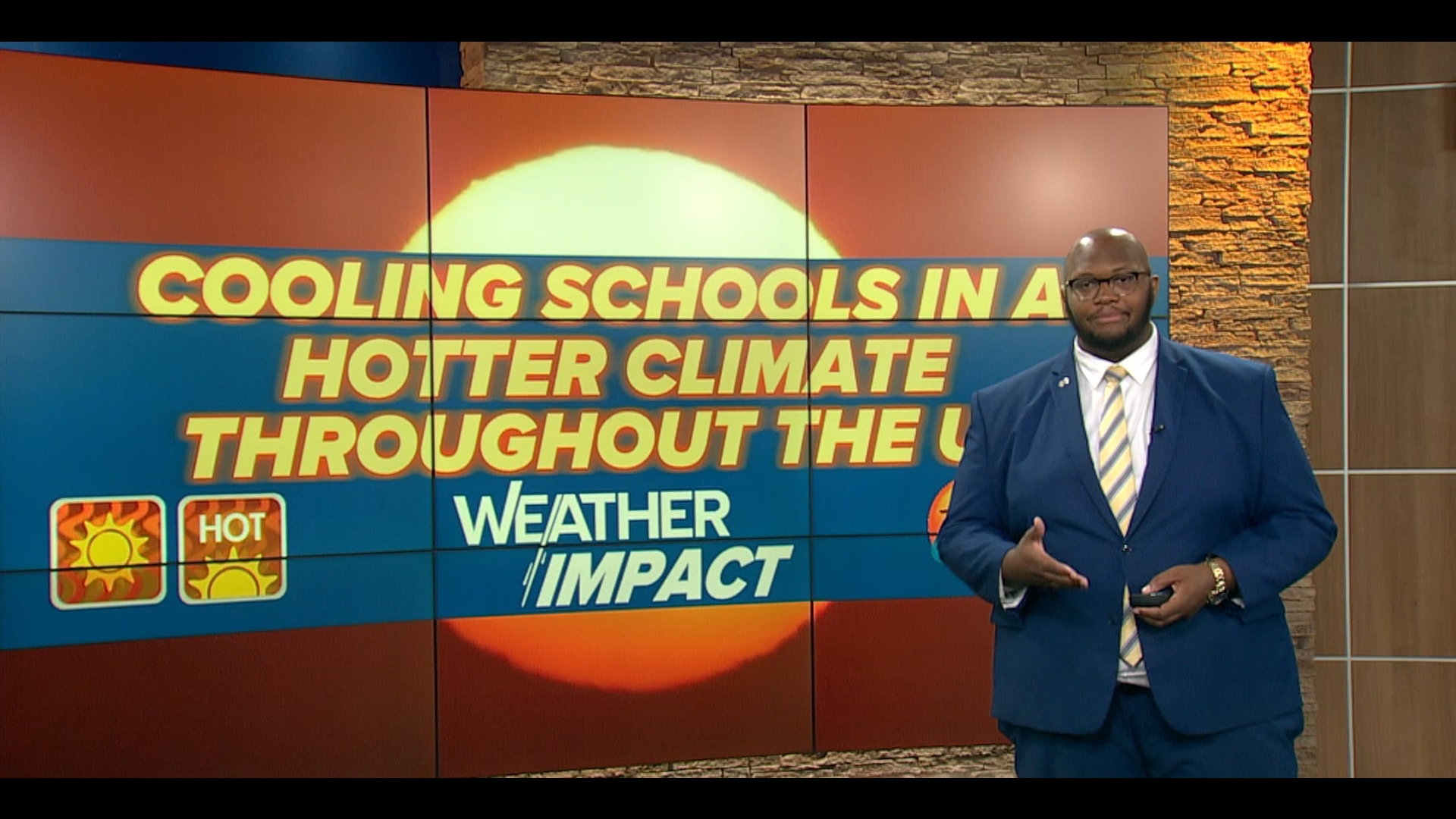TOLEDO, Ohio — The school year is now in full swing for many students across the country as we round the corner of meteorological summer and inch closer to fall.
However, extended summers across the US, including the Midwest, mean schools will need to take extra efforts to keep kids cool during the day. Here's how students, the climate and education are affected by late summer heat.
A study done by Climate Central stated that there has been a growing concern when it comes to keeping classrooms cool and safe during the hotter days. According to Climate Central, in many places, summer heat lingers as students and staff begin a new school year. As the planet warms, higher average temperatures and more frequent extreme heat increase the cooling demand to keep homes, schools, and other buildings at safe, comfortable temperatures.
As we know, in some areas summer heat continues for weeks and weeks without much relief, so as a result, these schools are having to find ways to keep classrooms cool. This ranges from air conditioning to insulation renovation projects, many of which are quite expensive.

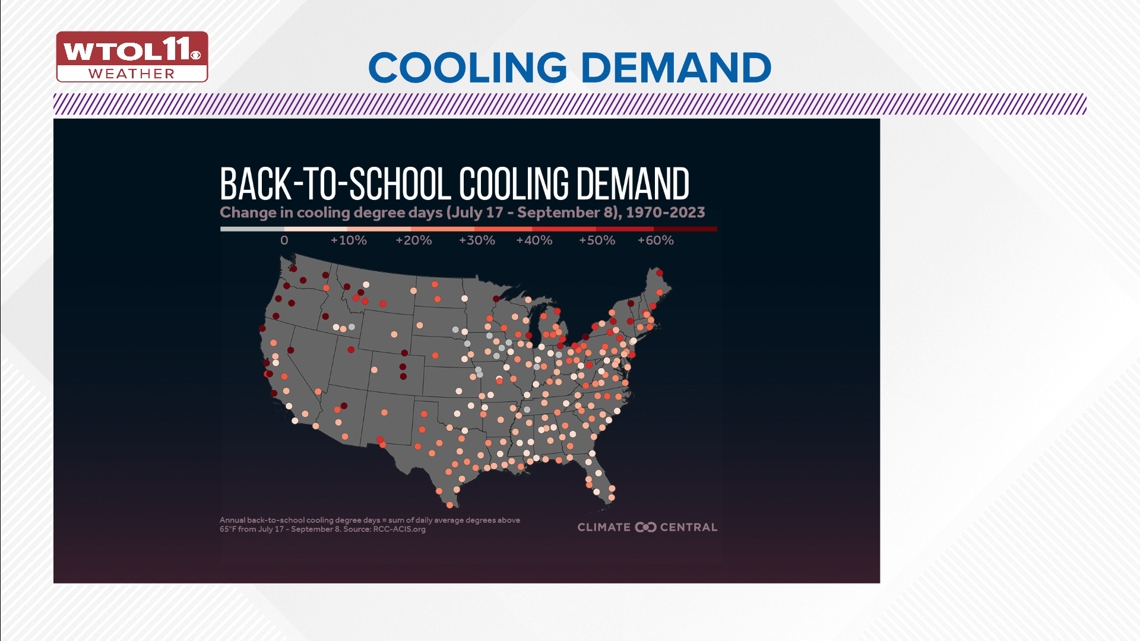
Although there are few classrooms and schools across northwest Ohio and southeast Michigan without AC, there is still the concern for the cooling demand in classrooms that has risen significantly since 1970. The data from Climate Central shows that Toledo has seen a 53% increase in Cooling Degree days since 1970.
What are Cooling Degree Days (CDD)?
When we talk about the cooling demand in the world, it is quickly rising due to the rapid global warming that we constantly see and feel each year. The more the Earth’s temperature rises, the more buildings, schools and other infrastructures will have to meet the demand for cooling buildings and areas.
So, to break down what exactly a Cooling Degree Day is we must go back to the classroom to understand the logic and concept of it. According to the National Weather Service, CDD are based on the assumption that when the outside temperature is 65 degrees Fahrenheit, we do not need heating or cooling to be comfortable. Degree days are the difference between the daily temperature mean, (high temperature plus low temperature divided by two) and 65 degrees.
If the temperature mean is above 65 degrees, we subtract 65 from the mean and the result is Cooling Degree Days. If the temperature mean is below 65 degrees, we subtract the mean from 65 and the result is Heating Degree Days.
So, to sum it up, the number of these CDD we have seen in the US has increased significantly since 1970 when we only saw just over 300 days, but now we are well over 400 days at this point.

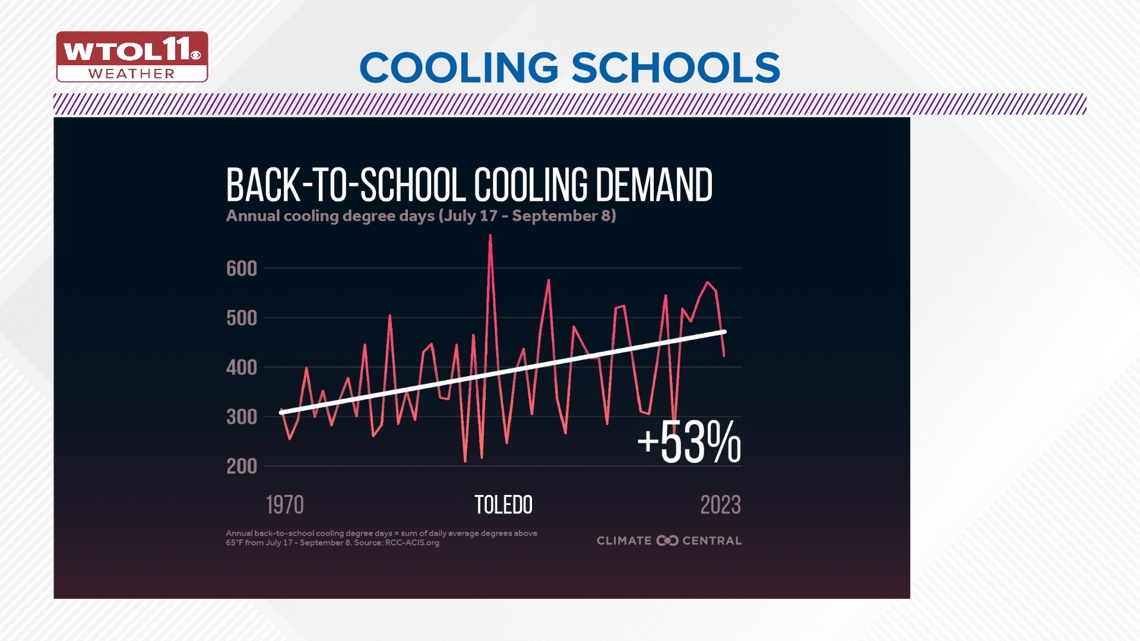
Summer and fall student athletics
As we know as schools start back up, so does the calendar year for team sports in schools. Sports like football, lacrosse, cross country and soccer all start during summer and fall, and for these athletes, it can be extremely hard to keep up with this level of competition while fighting the hot temperatures daily.
One of the most important challenges is keeping our kids safe from extreme heat in and out of the classroom. On days when it is hot, and recess and PE are happening, we must be extra vigilant of our kids during hot days and watch for signs of heat illness.

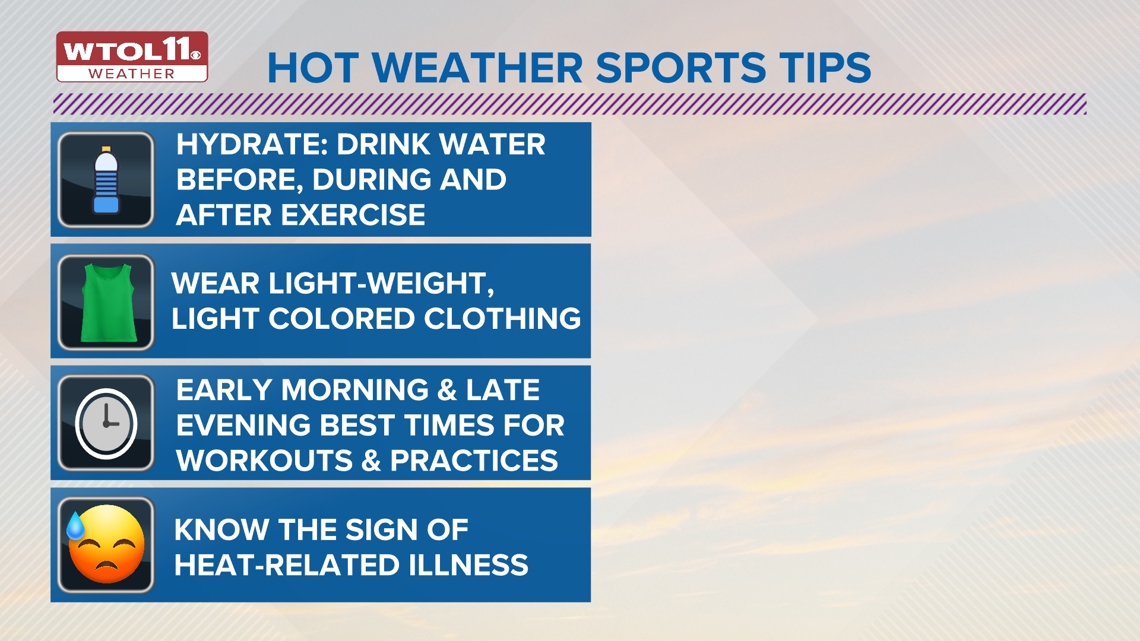
Furthermore, for after-school practices, it may seem like students may not have a choice but to practice in the heat. Over the years it has become unreasonable, and sometimes not practical, for sports to practice in these extremely hot temperatures.
According to the CDC, heat-related illness in athletes can be prevented if coaches and athletes are properly educated about heat safety. Extreme Heat is the deadliest weather-related hazard in the US, and just last year according to the CDC, we say an all-time high for heat-related deaths in the US. Just over 2,000 deaths were reported in the previous year due to heat-related issues. As our climate warms, this will become a more common issue for all age groups.

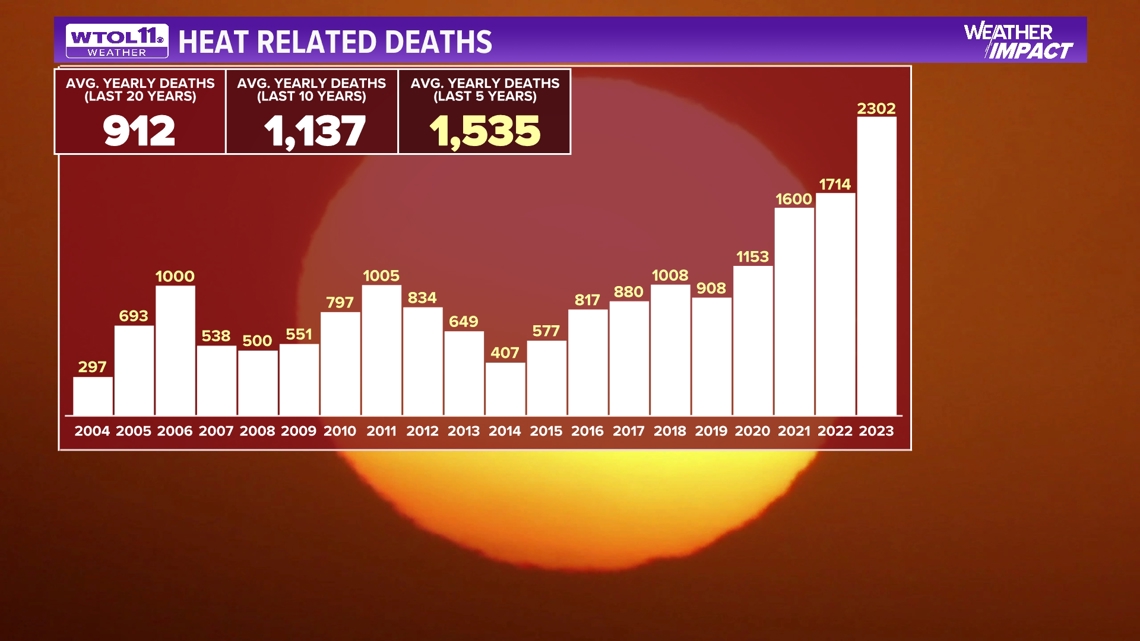
Extreme heat this week & next week
As the southwestern part of the country is having an extremely hot week, the cooling demand is again high across many regions. Forecast highs across Texas and Arizona have exceeded over a hundred degrees in many cities and towns. Some areas in Arizona have seen at least 2 consecutive weeks of triple-digit temperatures. This has put many schools in the southwest US relying on air conditioning to keep students cool and safe.
One of the more important studies and facts to take into consideration when we talk about the demand and need for cooling in schools is that a study done by the American Economic Association found that a 1 degree hotter school year is associated with a 1% reduction in learning that year, based on test scores.
Proper air-conditioning in these is key and needed to sustain the success of students and kids in the classroom. The work can start now to reverse the issues we deal with through the summer, and sometimes even early fall. According to Climate Central, schools across the U.S. lack adequate infrastructure to cool buildings. A 2020 report by the Government Accountability Office found that around 41% of public school districts need to replace or update HVAC systems in at least half of their schools


If this issue is ignored in the future for students to have a safe and comfortable space for learning, test scores and student performance will continue to be impacted on a national scale. Students and kids who are more vulnerable to heat-related issues will need even more attention going forward if HVAC systems throughout schools are not improved.

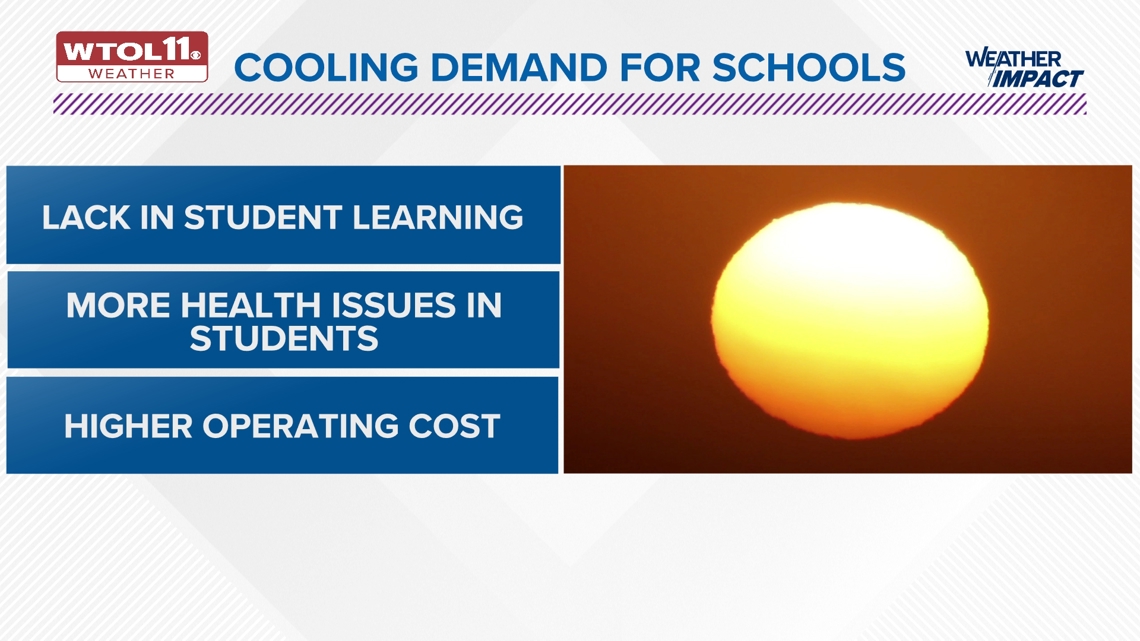
Lastly, the longer that these upgrades are not considered or affected, the more the cost of replacement will put a damper on school performance. The reality is we are in a warming climate, where weather events and catastrophes are happening frequently. There are several climate issues and topics that need to be addressed, and need attention, as each week goes by, we will continue to break down issues and weather phenomena that will happen as we go through the next several months.
WATCH MORE FROM WTOL 11 WEATHER IMPACT

